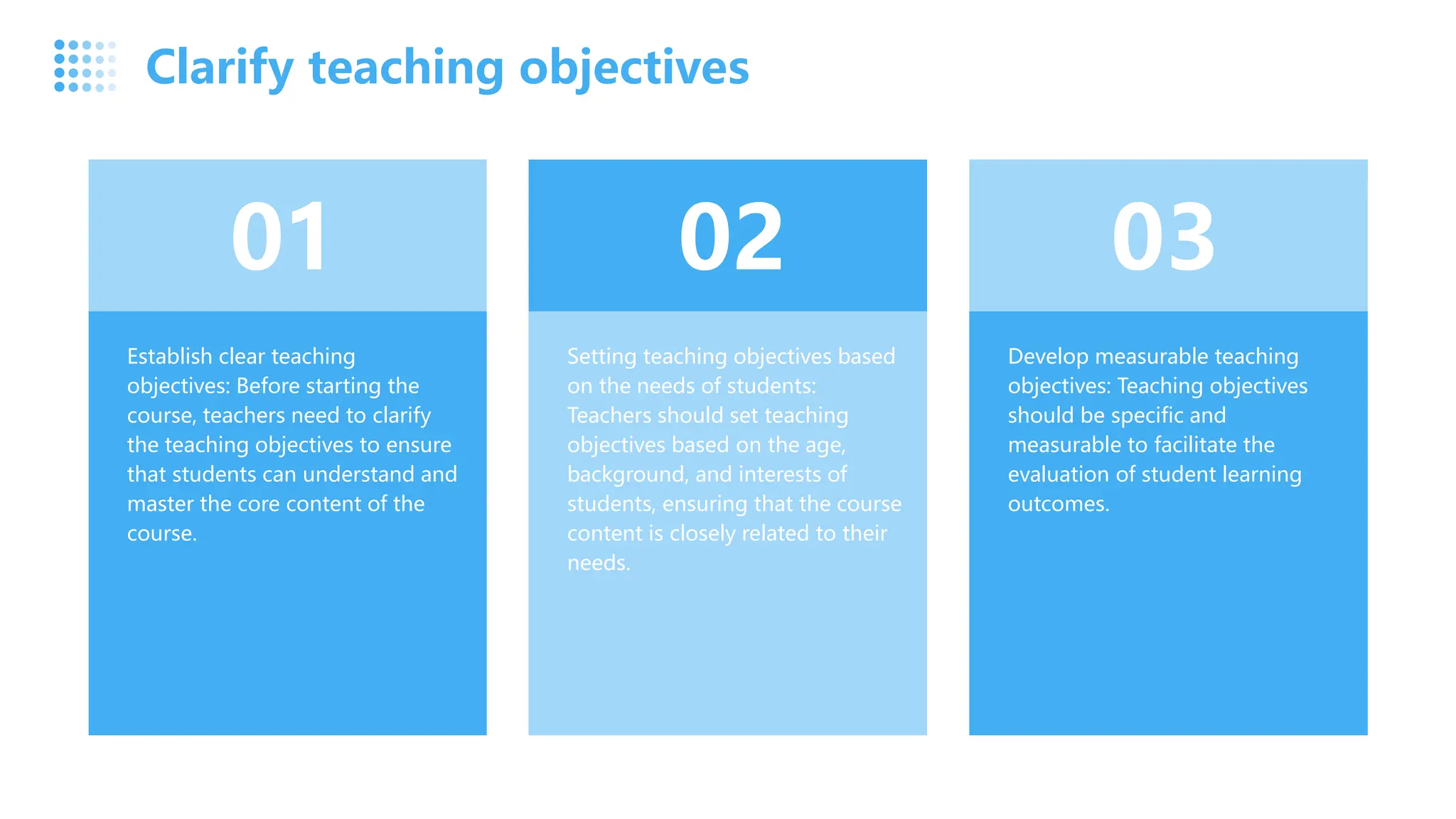Effectively executed courses can have several positive impacts:
1. They provide students with a solid foundation of knowledge and skills, allowing them to better understand concepts and perform well on exams.
2. Well-designed courses motivate students to learn actively and engage in meaningful learning experiences.
3. Effective courses also enhance students' practical abilities by providing opportunities to apply their knowledge in real-world settings and develop problem-solving skills. This preparation helps students succeed in their future careers and make contributions to their communities.



























